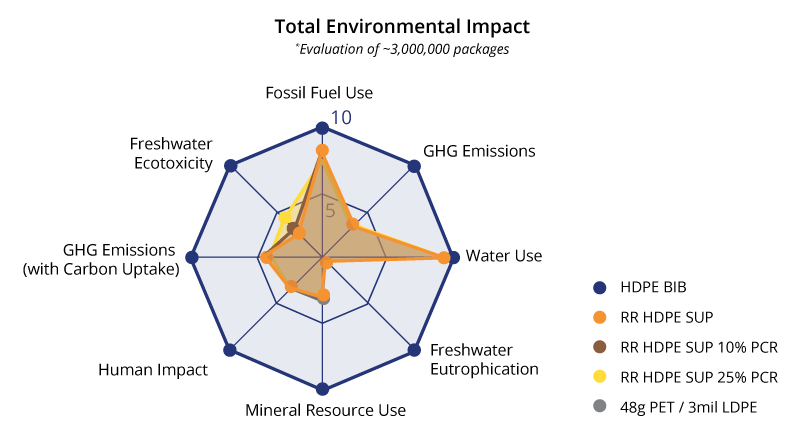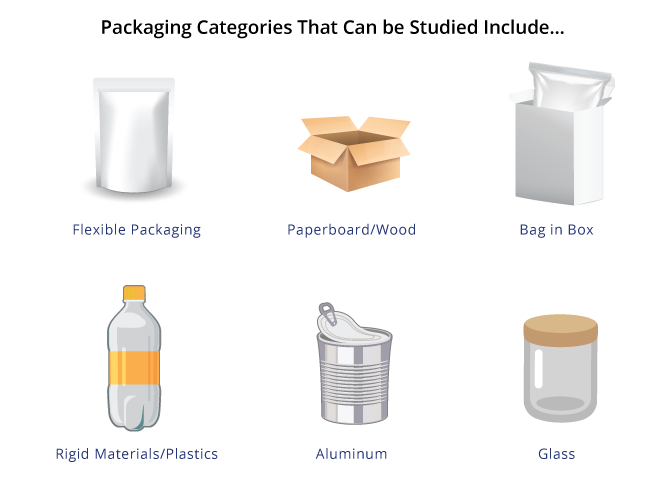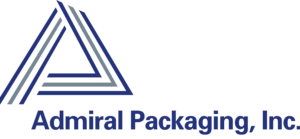What’s the Benefit to Doing an LCA Study?
Consumers want sustainable packaging solutions.
But what does sustainable packaging really mean?
As members of the Sustainable Packaging Coalition (SPC), we engage with other industry experts in a membership-based collaborative to share best practices and advance the business case to make packaging more sustainable. We use the SPC definition of sustainable packaging (below) as a guide and vision to strive toward through continuous improvement and as new materials and technologies emerge.
Sustainable Packaging:
- Is beneficial, safe & healthy for individuals and communities throughout its life cycle.
- Meets market criteria for performance and cost.
- Is sourced, manufactured, transported, and recycled using renewable energy.
- Optimizes the use of renewable or recycled source materials.
- Is manufactured using clean production technologies and best practices.
- Is made from materials healthy throughout the life cycle.
- Is physically designed to optimize materials and energy.
- Is effectively recovered and utilized in biological and/or industrial closed loop cycles.
What Can Be Learned from an LCA Study?
An LCA study can positively impact your company’s bottom line. An LCA study can help you:
- Find the gaps in your sustainability initiatives.
- Design a solution tailored to your sustainability goals.
- Make data driven sustainable packaging decisions.
- Quantify environmental impacts of your product packaging.
- Create efficiencies and potential cost savings through rightsizing.
- Demonstrate your brand’s sustainability commitment to your customers.
Every sustainable packaging project is different and there is no ‘one size fits all’ approach. An LCA study can determine the most sustainable packaging options for your company, your brand, and our planet.
How is a Life Cycle Analysis Study Conducted?
An LCA study is an assessment and a tool that gives you the ability to make better and more informed sustainable packaging decisions.
From the time that raw materials are produced to the time that a package is at the end of its useful life, all environmental impacts need to be considered. Incorporating specific data about packaging materials, sizes and volumes, we can evaluate the total environmental impacts of your current packaging format and compare it with other packaging solutions.
We recently conducted an LCA of a client’s existing bag in box (BIB) packaging format and compared it to a variety of stand-up pouch (SUP) packaging solutions.

Using industry standard metrics and software, Admiral will conduct a comprehensive study of the full life cycle of current and prospective packaging solutions. Every stage of each package’s life cycle is taken into consideration, from the time raw materials are produced to its end-of-life through recycling and waste streams. The study includes both upstream and downstream impacts of materials, processes, distribution, and disposal.
An LCA Study Provides Metrics that Matter
Comparing BIB to SUP packaging solutions, we were able to provide the below metrics for each solution to our client allowing them to choose the best option to meet their sustainability goals.
Admiral will provide you with a custom report that quantifies environmental impact in the following areas:
Fossil Fuel Use
Total quantity of fossil fuel consumed throughout the life cycle reported in megajoules (MJ) equivalents deprived. This indicator uses the Impact World+ method and assumes fossil resources mainly used for energy purposes. Fossil fuels include coal, petroleum, and natural gas. Inputs for nuclear fuel such as uranium are accounted for in the MINERAL CONSUMPTION indicator.
Greenhouse Gas Emissions ( ton CO2 eq.) with and without carbon uptake
The total quantity of greenhouse gases (GHG) emitted throughout the life cycle reported in kilograms of CO2 equivalents. The calculation with carbon uptake follows the IPCC Sixth Assessment Report (AR6) 2021 100a w/CO2 Uptake method and accounts for carbon sequestration and biogenic carbon emissions.
The calculation without carbon uptake follows the IPCC Sixth Assessment Report (AR6) 2021 100a w/o CO2 Uptake method and considers climate feedback loops.
Water Use
The relative available water remaining per area in a watershed after the demand of humans, aquatic ecosystems, and manufacturing process has been met. This indicator uses the AWARE method and accounts for water scarcity. The result represents the relative value in comparison with the average liters consumed in the world. Essentially, the total water consumed to make the package is multiplied by the region’s scarcity factor which will either increase or decrease the water usage value based on the scarcity or excess availability of water in a specific region.
Freshwater Eutrophication
Eutrophication is the abnormal increase in chemical nutrients that results in excessive plant/algal growth and decay resulting in an anoxic condition in freshwater systems, the major consequence being algae blooms. Typically, these are emissions of phosphorus compounds released during the production of materials. It is reported in phosphate (PO 4) equivalents and is calculated with Impact World + characterization factors.
Mineral resource use
This indicator uses the material competition scarcity index from de Bruille (2014) as a midpoint indicator and is pulled from Impact World +. The factor represents the fraction of material needed by future users that are not able to find a reliable substitute for the mineral. It is expressed in units of kilograms of deprived resource per kilogram of resource dissipated. It considers mineral scarcity and viable substitutes.
Human Impact
The quantity of short-term environmental emissions resulting in particulate, cancer & toxic non-cancer impacts to humans released throughout the lifecycle. The metric reports these three measurements in Disability Adjusted Life Years (DALY). Calculated using Impact World + and considers severity factors of any adverse effects.
Freshwater Ecotoxicity
The quantity of environmental emissions resulting in aquatic toxic impacts released throughout the life cycle reported in Comparative Toxic Unit ecosystem (CTUe). CTUe corresponds to a fraction of disappeared species over a cubic meter of freshwater (or marine water) during one year. This is a measure of the ecotoxicity impact of chemical releases to air, water, and land using aquatic toxicity factors and is calculated using the Impact World+ midpoint indicator with exclusion of long-term emissions.
Material Utilization
The total mass per packaging system is added up as well as the total mass of all of the packaging systems evaluated. The equivalency comparison considers different pallet efficiencies and calculates the total mass of the packaging.

Every LCA study is customizable and flexible. You can swap in and out different packaging types, sizes, and volume levels. You can change the variables as needed to calculate and consider multiple options.

Categories of Study

Sustainable Packaging Solutions
Technology has led to significant advances in sustainable packaging. Using recycle ready materials, bio-based resins, post-consumer recycled content, or compostable materials have become valuable approaches, but the materials only tell part of the story of a package’s life and its impact on our planet.
Some packaging materials, though recyclable, are difficult to recycle. Our streams are not all ready to process them, and many still end up in landfills despite the intentions of the product’s companies and consumers. The amount of these items recycled is far from optimal. And for those that are recycled, some require a significant amount of energy to do so, which adds to environmental impact.

Or

All environmental impacts need to be reflected to tell the true story of sustainability. Anytime we can eliminate a part of packaging — make it thinner, make it lighter — we make it better and more sustainable. In terms of holistic sustainability, flexible packaging is often the best option available.
At Admiral, we recognize that every product is unique, and we can develop a sustainable packaging strategy that is as unique as your brand. Using an innovative and quantitative approach, Admiral Packaging is helping brand owners define and meet their sustainability goals.
Get Started on an LCA Study Today
When it comes to sustainability, there are pros and cons with every decision. Your Admiral Packaging representative can help you make the most informed decisions about your packaging options though an LCA study. Take the first step to get started today.


